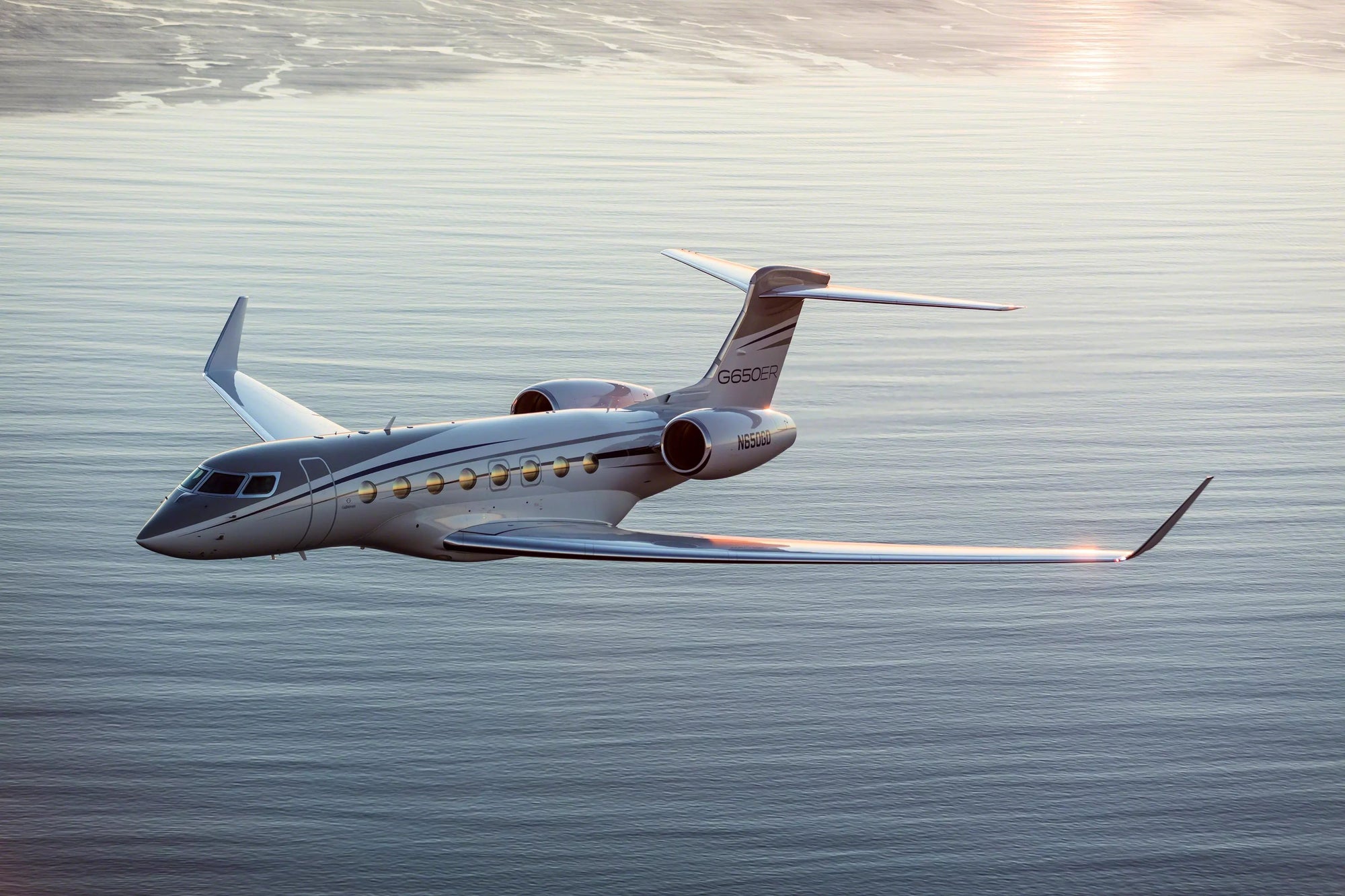Many airlines continue to struggle reaching operational equilibrium after the Covid pandemic; however, business aviation has enjoyed a rising demand for alternatives to scheduled services. Still, private jet manufacturers and operators also face shortages of skilled staff, rising costs (notably fuel), and general economic uncertainty, in part subsequent of the Russia’s invasion of Ukraine.
May’s European Business Aviation Convention & Exhibition in Geneva marks the first high-profile international gathering since Covid. The event gave a preview at a pair of new long-range aircraft and the launch of a new intercontinental model.
Gulfstream’s new G700 and Dassault’s Falcon 6X turned heads on the EBACE static display line. In addition, Bombardier announced a new Global 8000 model due in 2025. It promises to offer more range than the current Global 7500 flagship, offering an 8,000 nm reach and faster speeds of up to Mach 0.94.
G700 ENTRY-INTO-SERVICE
Gulfstream announced the G700 will enter service in the fourth quarter, but new FAA certification software mandates could push the schedule back three to six months.
The G700 offers Gulfstream’s tallest, widest, and longest cabin, measuring six feet, three inches (1.91 meters) tall by eight feet, two inches wide, and 56 feet, 11 inches long, proposing up to five living areas. The cabin configuration seats up to 19 passengers and sleeps up to 13 in seats from Gulfstream.
A well-equipped large galley offers space to prepare meals from scratch instead of relying on catering. Master suite options offer a master bath and spa shower.
The twinjet’s boast a maximum operating altitude of 51,000 feet, combined with a low cabin altitude (2,916 feet at 41,000 feet, and 4,850 feet at 51,000 feet), circadian lighting, and 100 percent non-recirculated air. Inmarsat JetConneX Ka-band broadband satellite communications comes standard, keeping passengers productive and entertained along the way.
The G700’s performance highlights include a 7,500-nm range, a new high-speed wing and winglet, a max speed of Mach 0.925, max cruise of Mach 0.90, and a Mach 0.85 long-range cruise speed. Two Rolls-Royce Pearl 700 engines, tailored for the new jet, each deliver 18,250 pounds of thrust.
Introduced in 2019, The Gulfstream’s G700 sets new performance and comfort standards. The aircraft—S/N 6, registered as N706GD—set its seventh international city-pair speed record achieving an average speed of Mach 0.90 from Gulfstream's headquarters in Savannah, Georgia, to Geneva in 7 hours and 37 minutes using sustainable aviation fuel.
S/N 6 returned to Savannah to rejoin the other five flight-test aircraft in the certification program. Critical phases of flight tests—including envelope expansion, flutter, aerodynamic stalls, flight control systems, cold weather and high-altitude testing—have concluded. Gulfstream expects a second fully outfitted production test aircraft to make its first flight this summer.
FALCON 6X AND 10X
Dassault’s 5,500-nm range Falcon 6X is the first equipped with a full cabin interior. A notable cabin mockup for the even larger 10X twinjet impressed in Geneva.
The 6X completed a four-week, 40-stop, 150-flight hour round-the-world trip in June to validate the dependability of the aircraft and onboard systems. It will enter into service mid-2023. This date reflects the delay of late 2022, caused by Covid-related supply chain disruptions.
The aircraft flew with a full crew of pilots, flight attendants, engineers, and interior specialists. The company scheduled more than 250 test points and operations included long-haul night flights, long runs at high speed (Mach 0.88), flying up to seven sectors in one day, operations from multiple airfield elevations and short runways in varied climatic conditions.
Three previous flight-test Falcon 6Xs have now amassed over 850 flight hours since March 10. Envelope expansion and most development flying have concluded, the aircraft attained Mach 0.97 in a shallow (15- to 17-degree) dive in an effort to clear flying operation up to Mach 0.90. It has run from airfields of 9,000-foot elevation, cold-soak conditions down to -30° degrees C, in addition to heavy braking trials.
EASA flight evaluation has begun with remaining runway tests to be executed. The aircraft's Pratt & Whitney Canada PW812D engine earned Transport Canada certification late last year, pilot training is underway, and the first simulator for the Honeywell-based EASy IV flight deck underwent installation at CAE’s facility in Burgess Hill in England.
The first customer aircraft and the fifth Falcon 6X is concluding at Little Rock, Arkansas, and the sixth will follow. Aircraft S/Ns 7 to 15 continue assembly at Dassault’s Bordeaux-Mérignac factory.
EMBRAER'S STRONG DEMAND
Brazil’s Embraer reports a strong demand for its business and family aircraft with a backlog stretching into 2024. This year, it anticipated delivering between 100 and 120 aircraft, including both Phenom and Praetor families.
“New users are coming into the marketplace, and we are very well positioned with our products because those first-time buyers are coming to buy entry-level light jets and medium-category aircraft; whether they do that in a purchase sense or user sense, the numbers are significantly growing,” stated Embraer Executive Jets president Michael Amalfitano.
“Demand is there,” he added. “These are people who always could afford to buy a jet. In the past, they might not have the justification, but they’re health and safety conscious.” Meanwhile, new buyers now more often opt for new aircraft due to the lack of availability of used aircraft with the same capabilities. “It’s an exciting time to be in business aviation," said Amalfitano. "There are a lot of good things going on in terms of innovation, not only in sustainability but also in technology.”



